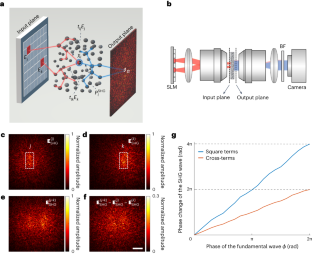2023-08-02 シンガポール国立大学(NUS)
◆これにより、高圧を必要とする逆浸透法よりもエネルギー消費が低減される可能性があります。従来のアクアポリンを用いた膜技術に比べて、オリゴウレアフォルダマーはより簡単に合成・改変できるため、大規模な水浄化目的の膜製造に有望な技術とされています。
<関連情報>
- https://news.nus.edu.sg/nus-scientists-develop-a-new-class-of-artificial-water-channels/
- https://www.sciencedirect.com/science/article/abs/pii/S2451929423001870
自然界にヒントを得た合成オリゴ尿素フォルダマー細孔、高い塩分除去能で水輸送を可能に Nature-inspired synthetic oligourea foldamer channels allow water transport with high salt rejection
Chiranjit Dutta, Pannaga Krishnamurthy, Dandan Su, Sung Hyun Yoo, Gavin W. Collie, Morgane Pasco, Jan K. Marzinek, Peter J. Bond, Chandra Verma, Axelle Grélard, Antoine Loquet, Jianwei Li, Min Luo, Mihail Barboiu, Gilles Guichard, R. Manjunatha Kini, Prakash P. Kumar
Chem Published: May 8, 2023
DOI:https://doi.org/10.1016/j.chempr.2023.04.007

The bigger picture
Water scarcity is a global problem. Although reverse osmosis is an effective method for water purification, it is costly and energy intensive. To address this issue, previously, biomimetic membranes have been developed that are embedded with aquaporins (AQPs) or artificial water channels (AWCs). We designed and synthesized helical amphipathic oligourea foldamers as a new class of AWCs that can be a promising alternative to AQPs. Our foldamer monomers do not have a tubular structure, but they self-assemble, generating void space that acts as transmembrane channels, which exhibit selective water permeability. The crystal packing of one of these foldamers shows a porin-like superstructure with a hydrophilic pore of 4.8 Å diameter. The known resistance of oligoureas to proteolytic degradation suggests that they offer long-term stability. Sequence-based tunability of their properties along with their large-scale synthesis can make them a new class of AWCs for water purification.
Summary
Biomimetic membranes incorporating artificial water channels (AWCs) are being developed for industrial water purification. Designing AWCs to achieve high water permeation with salt rejection is a challenge. We designed and synthesized oligourea foldamers, which form predictable helical structures that can be used to create biomimetic porin-like architectures. Two of these foldamers (H2OC1 and H2OC2) allow superior water permeability and almost total salt rejection across lipid membranes. Solid-state NMR, cryo-EM, and molecular dynamics analyses suggest proper insertion of foldamers into lipid vesicles. The H2OC1 crystal structure shows hydrophilic pores of diameters 4.8 and 6.4 Å. The oligourea helices pack together by hydrophobic and salt bridge interactions to build two channel-like assemblies. Besides their proteolytic stability and microbial resistance, the sequence of foldamers can be tailored to regulate selectivity. The ease of designing, synthesizing, and purifying oligourea foldamers is an added advantage. Our findings can help to develop novel AWCs for water purification applications.



